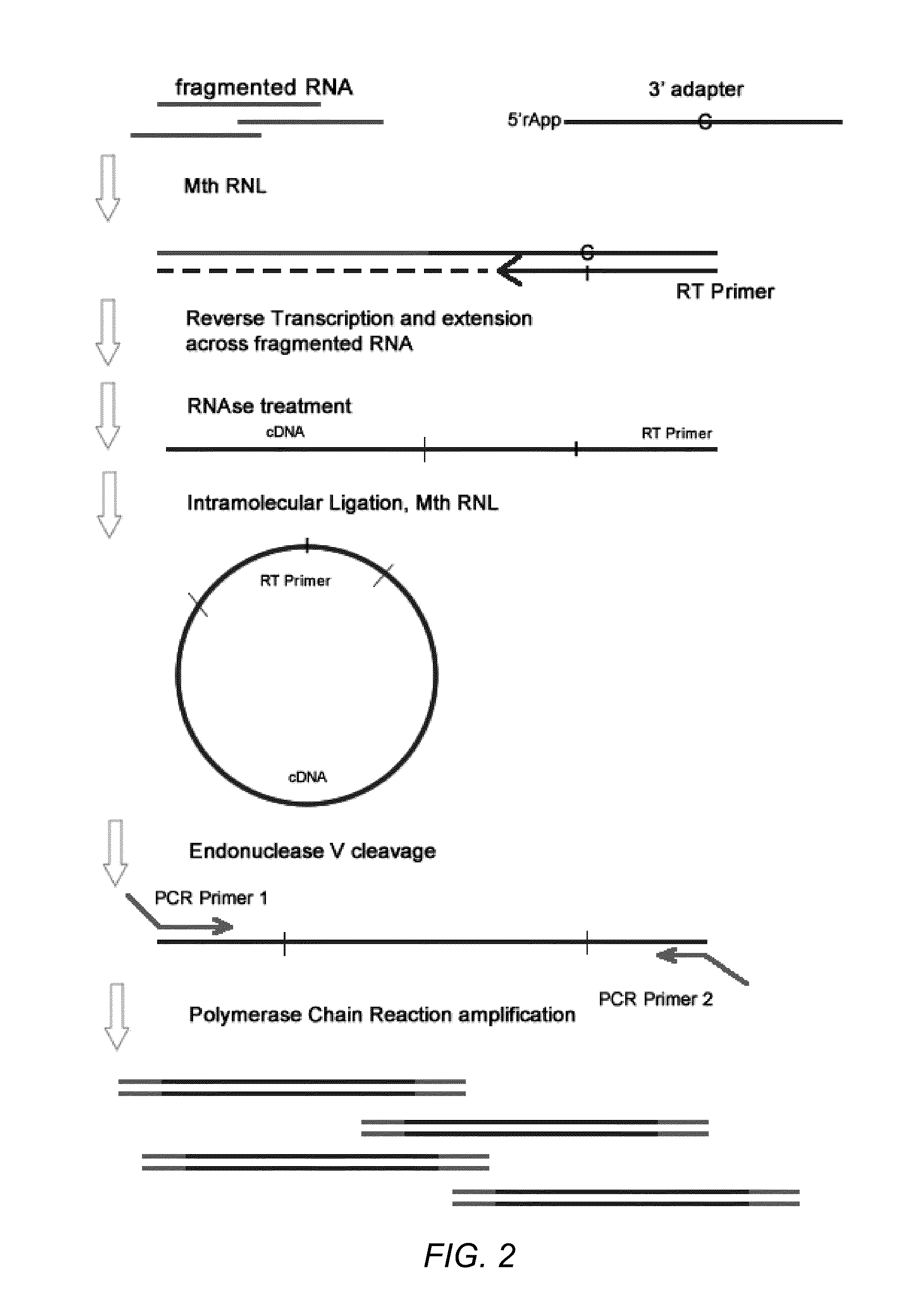Methods for improving ligation steps to minimize bias during production of libraries for massively parallel sequencing
a technology of ligation steps and ngs library, which is applied in the field of nucleic acid sequence determination, can solve the problems of unfavorable amplification of different targets, unfavorable ngs library, and general interference of secondary structure in target rna molecules with the enzymatic steps used to create ngs libraries
- Summary
- Abstract
- Description
- Claims
- Application Information
AI Technical Summary
Benefits of technology
Problems solved by technology
Method used
Image
Examples
examples
[0041]The following examples are included to demonstrate preferred embodiments of the invention. It should be appreciated by those of skill in the art that the techniques disclosed in the examples which follow represent techniques discovered by the inventor to function well in the practice of the invention, and thus can be considered to constitute preferred modes for its practice. However, those of skill in the art should, in light of the present disclosure, appreciate that many changes can be made in the specific embodiments which are disclosed and still obtain a like or similar result without departing from the spirit and scope of the invention.
Method 1—Elevated Temperature Ligation
[0042]FIG. 1 depicts a schematic diagram of the process steps for Method 1.
Step 1-3′ Adapter Ligation
Materials:
[0043]0.05-25 μM 3′ adapters (Bioo Scientific)
10×Mth RNA Ligase buffer (Bioo Scientific)
Mth RNA Ligase (Bioo Scientific)
[0044]RNA (0.1-100 μg of total RNA or isolated small RNA) (Bioo Scientifi...
example 2
Intramolecular Ligation
Step 1-3′ Adapter Ligation
Materials:
[0077]0.05-25 μM 3′ adapters (Bioo Scientific)
10×Mth RNA Ligase buffer (Bioo Scientific)
0.5-5000 U Mth RNA Ligase (Bioo Scientific)
[0078]RNA (1-10 μg of total RNA or isolated small RNA) (Bioo Scientific Cat. #5155-5182)
PUM
| Property | Measurement | Unit |
|---|---|---|
| Temperature | aaaaa | aaaaa |
| Temperature | aaaaa | aaaaa |
| Temperature | aaaaa | aaaaa |
Abstract
Description
Claims
Application Information
 Login to View More
Login to View More - R&D
- Intellectual Property
- Life Sciences
- Materials
- Tech Scout
- Unparalleled Data Quality
- Higher Quality Content
- 60% Fewer Hallucinations
Browse by: Latest US Patents, China's latest patents, Technical Efficacy Thesaurus, Application Domain, Technology Topic, Popular Technical Reports.
© 2025 PatSnap. All rights reserved.Legal|Privacy policy|Modern Slavery Act Transparency Statement|Sitemap|About US| Contact US: help@patsnap.com



